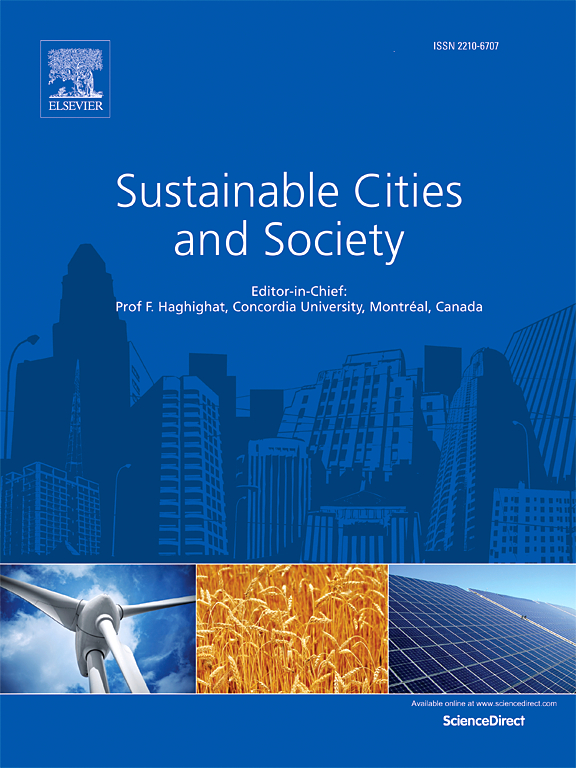Characterizing public response to unforeseen cascading fuel shortage: Through the lens of human mobility-based explainable machine learning models
IF 10.5
1区 工程技术
Q1 CONSTRUCTION & BUILDING TECHNOLOGY
引用次数: 0
Abstract
Climate disasters unfold multitudes of effects, from societal and commercial disruptions to fuel and power shortages. These consequences escalate further in cascading disasters, where individuals are more likely to respond unwarrantedly due to the lack of preparation and situational awareness. A noticeable gap exists in comprehending the linkages between public responses to such disasters and socioeconomic and spatial disparities, which are critical to the provision of effective guidance and situational information to those affected. Based on mobile phone data and various socioeconomic, built environment, and geographical variables, this study systematically examines human mobility-based public responses during a cascading fuel shortage crisis. The spatiotemporal analysis uncovered a significant increase in visits to gasoline stations during and after the crisis and a decrease in mean distance traveled at the Census Block Group level. Furthermore, mobility prediction models were constructed using the random forest regression algorithm, which can adequately forecast visits and mean distance traveled to gasoline stations across different crisis stages. The Shapley Additive Explanations analysis reveals how various factors (e.g., educational attainment and distance to the coast) influenced public responses. These findings reinforce the importance of tailored disaster response education and situational awareness to ensure equitable resource access during cascading disasters.
描述公众对不可预见的级联燃料短缺的反应:通过基于人类移动性的可解释机器学习模型的视角
气候灾害会带来多种影响,从社会和商业中断到燃料和电力短缺。这些后果在连锁灾难中进一步升级,由于缺乏准备和情境意识,个人更有可能做出不合理的反应。在理解公众对这类灾害的反应与社会经济和空间差异之间的联系方面存在着明显的差距,而社会经济和空间差异对于向受影响的人提供有效的指导和情况信息至关重要。基于手机数据和各种社会经济、建筑环境和地理变量,本研究系统地考察了在级联燃料短缺危机中基于人类移动性的公众反应。时空分析发现,在危机期间和危机之后,前往加油站的次数显著增加,而在人口普查组水平上,平均旅行距离减少。利用随机森林回归算法构建出行预测模型,能够较好地预测不同危机阶段的加油站访问量和平均出行距离。沙普利加性解释分析揭示了各种因素(如教育程度和离海岸的距离)如何影响公众的反应。这些发现强调了量身定制的灾害应对教育和态势感知的重要性,以确保在级联灾害期间公平获取资源。
本文章由计算机程序翻译,如有差异,请以英文原文为准。
求助全文
约1分钟内获得全文
求助全文
来源期刊

Sustainable Cities and Society
Social Sciences-Geography, Planning and Development
CiteScore
22.00
自引率
13.70%
发文量
810
审稿时长
27 days
期刊介绍:
Sustainable Cities and Society (SCS) is an international journal that focuses on fundamental and applied research to promote environmentally sustainable and socially resilient cities. The journal welcomes cross-cutting, multi-disciplinary research in various areas, including:
1. Smart cities and resilient environments;
2. Alternative/clean energy sources, energy distribution, distributed energy generation, and energy demand reduction/management;
3. Monitoring and improving air quality in built environment and cities (e.g., healthy built environment and air quality management);
4. Energy efficient, low/zero carbon, and green buildings/communities;
5. Climate change mitigation and adaptation in urban environments;
6. Green infrastructure and BMPs;
7. Environmental Footprint accounting and management;
8. Urban agriculture and forestry;
9. ICT, smart grid and intelligent infrastructure;
10. Urban design/planning, regulations, legislation, certification, economics, and policy;
11. Social aspects, impacts and resiliency of cities;
12. Behavior monitoring, analysis and change within urban communities;
13. Health monitoring and improvement;
14. Nexus issues related to sustainable cities and societies;
15. Smart city governance;
16. Decision Support Systems for trade-off and uncertainty analysis for improved management of cities and society;
17. Big data, machine learning, and artificial intelligence applications and case studies;
18. Critical infrastructure protection, including security, privacy, forensics, and reliability issues of cyber-physical systems.
19. Water footprint reduction and urban water distribution, harvesting, treatment, reuse and management;
20. Waste reduction and recycling;
21. Wastewater collection, treatment and recycling;
22. Smart, clean and healthy transportation systems and infrastructure;
 求助内容:
求助内容: 应助结果提醒方式:
应助结果提醒方式:


